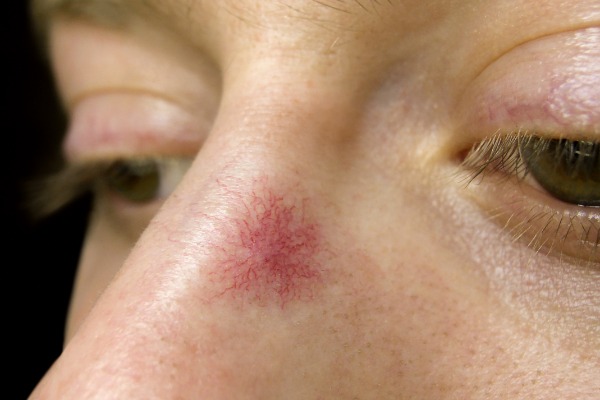
Procedure Time: Up to 30 minutes
Recovery Time: No downtime
Results Duration: Permanent removal of thread veins, larger areas may need more than one treatment to resolve.
Cost: From £150 - £250 per treatment session
Anaesthesia: None required
For a full list of FAQs please Click Here.
Microwave treatment utilises the principle of "Thermo-Coagulation" which is based on a high frequency wave - a microwave - heating up the thread vein without affecting the outer layers of the skin. Machines, such as Veinwave or ThermaVein , selectively heats the thread vein, destroying it and allowing the body to reasbsorb it over time. This is particularly useful for the smaller thread veins that are difficult to inject using microsclerotherapy There is usually minimal or no discomfort during microwave treatment. The device uses a fine needle which is inserted into the vein to allow accurate application of the treatment whilst protecting the surrounding skin and tissue. A single thread vein may require just one treatment session in order for it to disappear. However, repeat sessions may be required. Private prices for this treatment can range from around £150 - £250 for a treatment session. Total treatment costs depend upon the extent of treatment and the number of sessions required to make an improvement.
Do you have a question? Ask one of our experts NOWAnyone can suffer with thread (red, spider or broken) veins, and they can appear on any part of the body. Although harmless, they can cause distress as the sufferer often feels self-conscious, particularly if the veins are on an exposed part of the body, such as the legs, which people can see.
Sclerotherapy was developed in the 1920s for the treatment of varicose veins. This was refined for the treatment of thread veins, and this is what we now call microslerotherapy.
Recent advancements in Laser and IPL technology have provided a newer option for thread vein treatment and other vascular lesions.
Even more recently, the use of high frequency microwave energy has become available in the U.K. for the treatment of thread veins. An example of this a machine called the Thermavein which is derived from the Veinwave technology, and it is particularly useful for the treatment of very fine thread veins.
To help you distinguish between thread veins and varicose veins, the following may act as a guideline:
Thread veins
Usually very near the surface of the skin, red, blue, or purple in colour, and less than 1 to 2 mm in diameter.
They are not regarded as a serious medical condition but they can occasionally ache.
Varicose veins
Usually deeper beneath the skin, being skin coloured or bluish - green and more than 2mm in diameter.
They are more serious than thread veins. They can be painful and are a sign of leg pump failure.
Treatment of varicose veins is generally considered to be a medical matter and not one for a cosmetic surgeon and so patients are often referred by their GP to a vascular (vein) specialist. For further information on varicose veins and associated leg pump failure which explains the diagnosis and treatment options, please go to www.veins.co.uk.
If you are considering microwave treatment of thread veins, the following information will give you a basic understanding of the procedure. It can't answer all your questions, since a lot depends on the individual patient and the practitioner. Please ask your practitioner about anything you don't understand.
This treatment utilises the principle of "Thermocoagulation" which is based on a high frequency wave - a microwave - heating up the thread vein without affecting the outer layers of the skin.
The machine selectively heats the thread vein, destroying it and allowing the body to reasbsorb it over a period of time.
Thermocoagulation can be used to treat spider veins, thread veins, (medically known as telangiectasia) including those on the nose, facial redness, blemishes, skin tags, spider naevi, and depending on the experience of the practitioner other skin lesions can be treated with this technology.
It is not to be confused with electrolysis, which is commonly used for hair removal. Some experienced electrologists do treat thread veins using electrolysis (the use of an electric current), but they need to be highly skilled as it can be painful and there is more potential for problems.
The first time you visit a clinic, a detailed discussion with a practitioner should clearly highlight your expectations of the cosmetic effect from this treatment. The practitioner should then be able to tell you if this is how they see the treatment working for you. If your expectations and theirs do not match each other, do not proceed until you are entirely happy with what they are telling you.
The practitioner may then take a medical history to make sure that there are no reasons why you are not suited to be treated with the equipment. Then you would normally be asked to sign a consent form, which means that you have understood what the treatment may do, and the potential side effects.
Photographs may also be taken by the practitioner that can be used as a “before and after” comparison to show you how successful your treatment has been.
All this may happen in your first visit. If you are happy to proceed further, the practitioner may also go ahead with your first treatment at this time. Equally, you may decide to keep your treatment separate from the initial consultation and not begin the procedure until your next visit.
The procedure
There is usually minimal or no discomfort during microwave treatment. The device uses a fine needle which is inserted into the vein to allow accurate application of the treatment whilst protecting the surrounding skin and tissue.
Treatment sessions depend on the number and extent of thread veins requiring treatment.
Repeat procedures
A single thread vein may require just one treatment session in order for it to disappear.
However, repeat sessions may be required for some patients - especially if multiple areas are affected.
The whole treatment should usually take no longer than half an hour or so – depending on how many veins require treatment.
You can normally drive immediately and go about your usual daily activities following this treatment.
Some pain or burning at the needle injection site may occur, however, most people find it a relatively painless treatment.
For 3 weeks or so the area treated may be red - occasionally this lasts for 5 or 6 weeks.
Complications are extremely rare, according to the manufacturer, and there appears to be little risk of scarring following treatment. Scarring can occasionally be a problem with other treatment options.
Occasionally you may also find new veins developing in the treated areas, or even old veins flaring up again.
As long as you are generally healthy and don’t have any skin diseases or infections in the area treated, there are few medical reasons why patients should not undergo this treatment.
Although there is no evidence that this treatment is harmful for pregnant women, you may be advised to wait until after you have given birth before embarking upon a course of treatment.
Although many of these machines are used by physicians and dermatologists, they can be used, with proper training, by non-medics.
It is highly unlikely that anyone considering microwave treatment of thread veins would be able to access this free of charge on the National Health Service.
However certain regions do make special cases, and we would always advise that you visit your General Practitioner and see what they recommend.
As well as their advice and guidance they may also be able to refer you to a local NHS Hospital who can treat you.
Private prices for this treatment can range from around £150 - £250 for a treatment session.
Total treatment costs depend upon the extent of treatment and the number of sessions required to make an improvement.
Microsclerotherapy is still a widely used treatment and is considered by many clinicians as the treatment of choice for leg thread veins.
Newer alternatives such as Lasers and IPL and microwave machines, such as the Veinwave are, however, starting to become more popular.
Thermavein, powered by Veinwave technology is particularly useful for the smaller thread veins (less than 0.3mm in diameter) that are difficult to inject using microsclerotherapy.
Lasers and IPL are more suited to the treatment of larger areas affected by an extensive number of thread veins.
The Thermavein machine has also been trialled to evaluate it's effectiveness and safety as a treatment for other conditions including rosacea.
Please note that results of non-surgical treatments vary enormously, depending upon both the patient and the skill of the individual practitioner.
Results of Veinwave treatments on the face and nose. Images below taken approximately 15 minutes apart. (Before: Left, After: right)
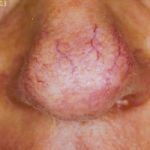
|
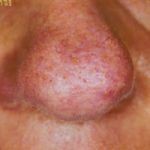
|
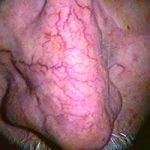
|
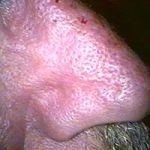
|
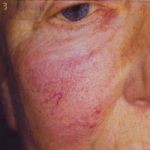
|
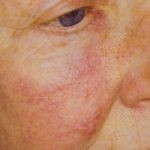
|
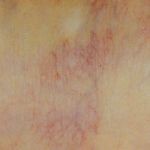
|
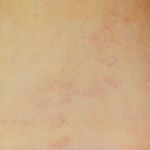
|
Images provided courtesy of Dr Brian Newman.
(All before and after photographs are real patients, your results may differ).